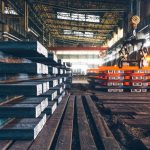Mumbai: The Mumbai Metro Line 3, also known as the Aqua Line and the city’s first underground metro service, opened for public use on Monday, as announced by the Mumbai Metro Rail Corporation (MMRC). The line, connecting Bandra-Kurla Complex (BKC) to Aarey Colony via JVLR, was inaugurated by Prime Minister Narendra Modi on Saturday.
Following the inauguration, Modi expressed his enthusiasm on X, stating, “The metro network in Mumbai has expanded, enhancing the ease of life for citizens! Congratulations to Mumbaikars on the opening of the Aarey JVLR to BKC route as part of the first phase of Mumbai Metro Line 3.”
Key Facts about Mumbai Metro Line 3:
- Route Overview: The Mumbai Metro 3, also referred to as the Colaba-Bandra-Seepz line, stretches 33.5 km, with 12.44 km now open to the public. The project has been developed at a cost exceeding ₹32,000 crore.
- Stations: The line includes 10 stations: Aarey, Marol Naka, CSMIA T1 (Terminal 1), MIDC, SEEPZ, Sahar Road, CSMIA T2 (Terminal 2), Vidyanagari, Dharavi, and BKC. Nine of these stations are underground, while Aarey is the only surface-level station.
- Operations and Capacity: According to MMRC, the line will conduct 96 daily trips. Each metro train can accommodate over 2,000 passengers, operating at a maximum speed of 85 km/h and an average speed of 35 km/h. Service hours are set from 6:30 am to 10:30 pm on weekdays and from 8:30 am to 10:30 pm on weekends, with fares ranging from ₹10 to ₹50. Commuters can purchase tickets via an app or at physical counters, and the National Common Mobility Card will be valid across all metro lines by next month.
- Traffic Impact: Once fully operational by June 2025, the Metro line is expected to reduce vehicular traffic by up to 650,000 trips daily.






